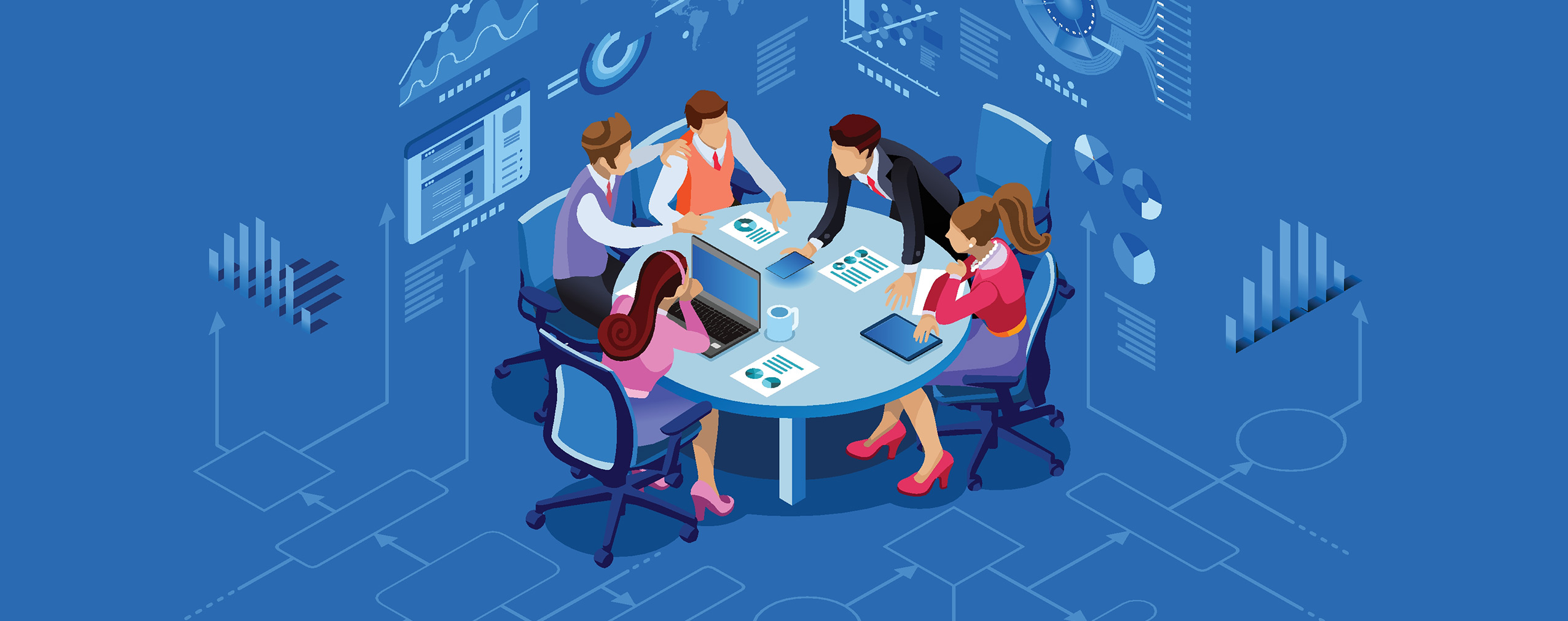Imagine an egg. Not an Easter Egg. An ordinary one. Can you see it? And now imagine that a photo of such an egg on a white background, published on Instagram, got almost a million likes in just 25 minutes after the publication.
It’s not a made-up story. It really happened.
In January 2019, someone published such a photo on Instagram called world-record-egg. Can you believe that as I’m writing this article, the picture has already got over 53 million likes?
And to remind you – it’s just an egg, not a pic of a celebrity caught red-handed, stealing a chocolate bar from a grocery store.
Seems unbelievable, right?
Table of Contents
Swipe, scroll, tap and go
This simple rhyme comes to our minds when we think about data consumption in social channels.
Social media profiles – a must-have of every company if you want to be a serious competitor. Your company undoubtedly can be found on the most popular platforms – Facebook, Twitter, or Instagram. There might be a social media ninja to run them all in your company, or perhaps you are the one responsible for your social media communication.
The overloaded information and clutter make it hard for audiences to analyse messages they receive from plenty of different places. This is also due to the fact they don’t have enough time. When was the last time you sat in an armchair with your smartphone and said: “Okay, now I’m going to take a closer look at my favorite social profiles, pick the most interesting articles and read them from cover to cover”?
That’s not the way it works. You swipe, scroll and tap while on the bus, on your way to work, or during a meal. These situations also don’t make it easy for you to concentrate.
Besides, you are often interrupted. It’s your stop, and you have to get off the bus. Or you need to leave your breakfast and run because your meeting starts in five minutes.
Taking all these circumstances into consideration, can you expect that even the most valuable content will be noticed, acquired, and remembered? Not really.
Social media – content fast food?
Social media and the way users consume content published in social channels require quick reactions. Sharing texts before reading them. Liking videos before watching them. Commenting on pictures before taking a look at them. Social media content consumption is extremely fast and superficial.
This is not good news if you operate in the B2B sector and the SaaS sector, in particular.
To present your product or service to your prospects and customers, you need much more of their attention and focus.
Are you worried that your audience is less and less engaged in the relationship with your brand? That their attention span keeps shrinking year after year? And that no matter what you publish on your social profiles, the chance they will even read it, is one-to-million?
Fortunately, we have a solution to your problems. In this article, we will try to show you that the topics you look at on your social profiles can be elaborated in other more engaging content formats.
Like webinars.
Media consumption – a handful of hard data
Lets’ take a look at some research first.
It’s not true that people can’t be bothered to read and whatever you offer them they will briefly scan it and go. People want to spend time on consuming content to acquire knowledge. What is salient here, however, is the content format and the way you present it to the audience.
Take a look at the Demand Gen Report. According to the report, the B2B buyers are most willing to dig into the following content formats:
- Case studies: 79%
- White papers: 71%
- Blog posts: 71%
- Third party reports: 69%
- E-books: 67%
- Webinars: 66%
- Infographics: 62%
In our State of Webinars Report, published in February 2019, we checked how much time on average users of our platform spent consuming webinar content. It turned out an average participant spends 52 minutes taking part in a webinar room. What’s interesting here is the fact that according to CNBC, an average American devotes almost the same amount of time – 50 minutes, watching Netflix.
Still unconvinced? There’s more hard data for you.
B2B decision-makers stay longer with webinars
From the same survey, you can learn the amount of time B2B decision-makers spend consuming content. It turned out that 37% of them spend 30-60 minutes participating in webinars. Only 12% of B2B managers devote that amount of time reviewing white papers and, still fewer, 7% listen to podcasts for that long. This proves that webinars are beating out white papers by 25% and podcasts by 30%.
What does it all mean? It means that more serious content and longer formats don’t discourage the audience. If you provide your content in an engaging and attractive way, users are ready to spend more time consuming it.
What’s extremely important is to know what formats you should provide on subsequent stages of the sales funnel. Let’s now take a look at the B2B sales funnel and check when is the best time to engage prospects with social media posts and when you should offer them bigger chunks of information, e.g. via webinars.
Sales funnel in the B2B sector
The top of the sales funnel is letting your audience know you exist. It’s like meeting a stranger at an industry or networking event. You say your name and briefly explain what you do. Your interlocutor usually stops for a while, shakes your hand and takes your business card. Chances are they will remember your name and the field you work in.
This is the so-called awareness stage of the funnel – the moment your prospects hear about your brand for the first time. Social media channels are great at this stage. On your social profiles, you can present yourself the best you can. You can mention topics you deal with and invite the audience to follow you.
But what happens next?
Next, you have to take actions to guide your prospects down the funnel. You want them to reach the so-called consideration stage where they realise their needs and start looking for solutions. And finally, you want them to enter the conversion stage of the funnel, where they decide to buy a product. And it should be your product.
Formats such as reports, white papers, case studies, and webinars are perfect for the middle stage of the sales funnel. Your prospects already know who you are and what you do. You have been interacting on social media for a while. You had a chance to learn more about them – about their pain points and problems they face. Now it’s time to dig deeper and, finally, to present a solution. However, a short Facebook or Instagram post won’t be enough to convince them. A long one? They will scan it, scroll down and go.
Instead, offer them a big chunk of knowledge in an engaging way. Engage them for a long time to be able to identify their problems. What tool will be the most suitable for such a challenge?
Yes, you are right – webinars!
Why are webinars the best option for the middle stage of the funnel?
In fact, webinars are a useful tool at every stage of the sales funnel. There is no doubt they are the best for the consideration stage where you explain what your product is and how it can address your prospect’s business needs. Why is that?
Not only do webinars let you present a topic in detail, but they also make it possible for you to get immediate feedback from the audience. They are interactive and give you more than videos on YouTube or presentations on SlideShare.
In a webinar room, you hold a live meeting for your attendees. You can talk to them in real time. For them, it is a perfect opportunity to get to know your brand. Whereas for you, it is a chance to turn them into paying customers very soon.
How can you interact with users during a webinar? The fact that you can see and hear each other in real time makes your meeting more real and engaging. In addition to that, there are plenty of features that enable interaction. In the list below, you will find the most important ones:
- Chat – lets you be in constant touch with attendees. You can write questions, answers and comments in the chat window.
- Audio modes – if chat isn’t enough to communicate effectively, why don’t you try a live discussion with your participants? With audio modes, up to 25 or only selected attendees can speak with you.
- Whiteboard – if you cannot explain something, sketch it. Thanks to the virtual whiteboard your message will be clearer.
- Screen sharing – if you cannot tell or draw something, maybe it’s easier to show how it works? Screen sharing is a great feature, particularly for presenting digital products.
- Q&A session – if you cannot answer all the questions during the online meeting, you can hold a Q&A session after it to clear all the doubts your attendees may have.
- Surveys & Polls – it’s a great tool to gather feedback from the audience.
What kind of webinars can you host in your B2B communication?
Many types of online meetings let you build a strong relationship with your prospects and customers. They make it possible for you to identify their needs, offer a solution and provide support. Let’s take a look at a few of them:
- Product demo webinar – it’s an online meeting where you present how your product works. Remember, most users prefer to SEE than to READ how something functions. That’s why product descriptions are not enough. Invite your audience to a live demo they can participate in – without leaving their home or office.
- Product update webinar – if your prospects already know your product, make sure you inform them about any updates – modifications, new features, resolved issues, etc.
- Online courses – want to show various aspects of your product? Invite them to a mini-online course – a series of webinars you host regularly to build an even stronger relationship with your audience.
- Meeting with an expert – if you are an expert in your niche and want to share your knowledge with your audience, do it with webinars. You can boost your expert’s image this way and show your prospects you’re good at what you do.
***
Let’s go back to the egg photo mentioned at the beginning. Eventually, it turned out the profile was set up by a company running a campaign for the awareness of people with mental problems.
Do you think any of the followers wondered what it was all about? Did they like the photo because so many people had already done it before? Did they read the post about the record? We’re almost sure, they didn’t.
Don’t rely on social media when you have serious matters to communicate to your customers!
So, as you can see, the deeper your prospects are in the sales funnel, the more they need proper content formats to establish a strong relationship with your brand and become your loyal customers.
Don’t expect they will be satisfied with short and superficial social media posts. Instead, make sure they get what they need – offer them top quality webinars and be prepared when they get in touch with you to close the deal.








